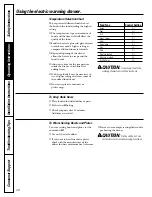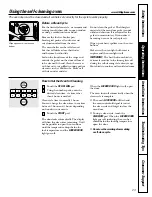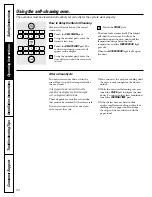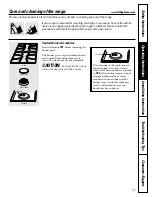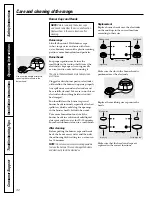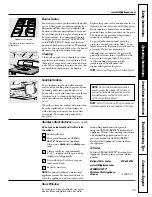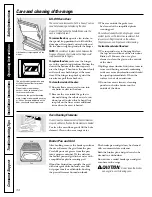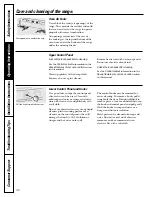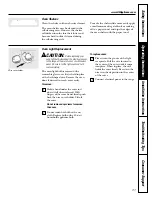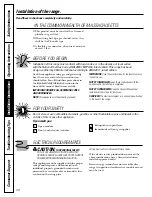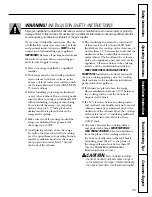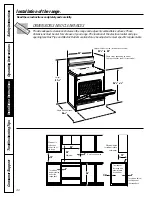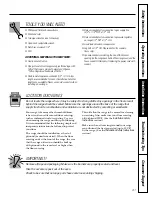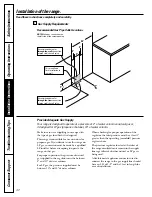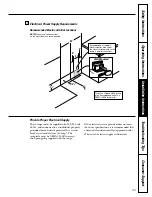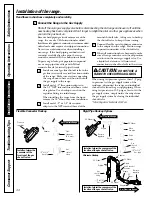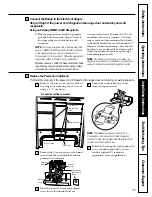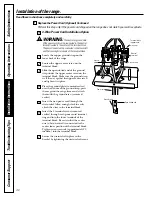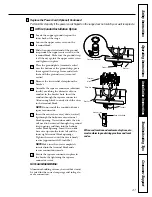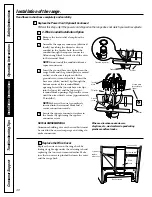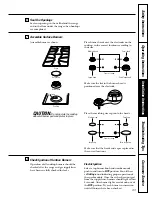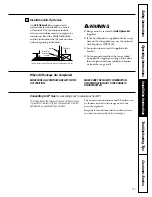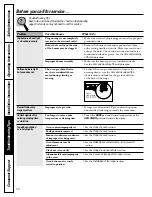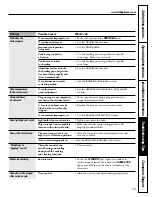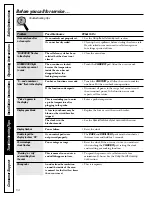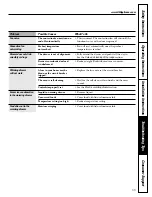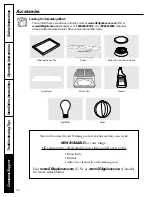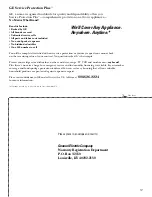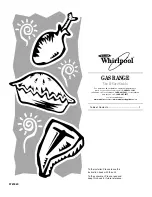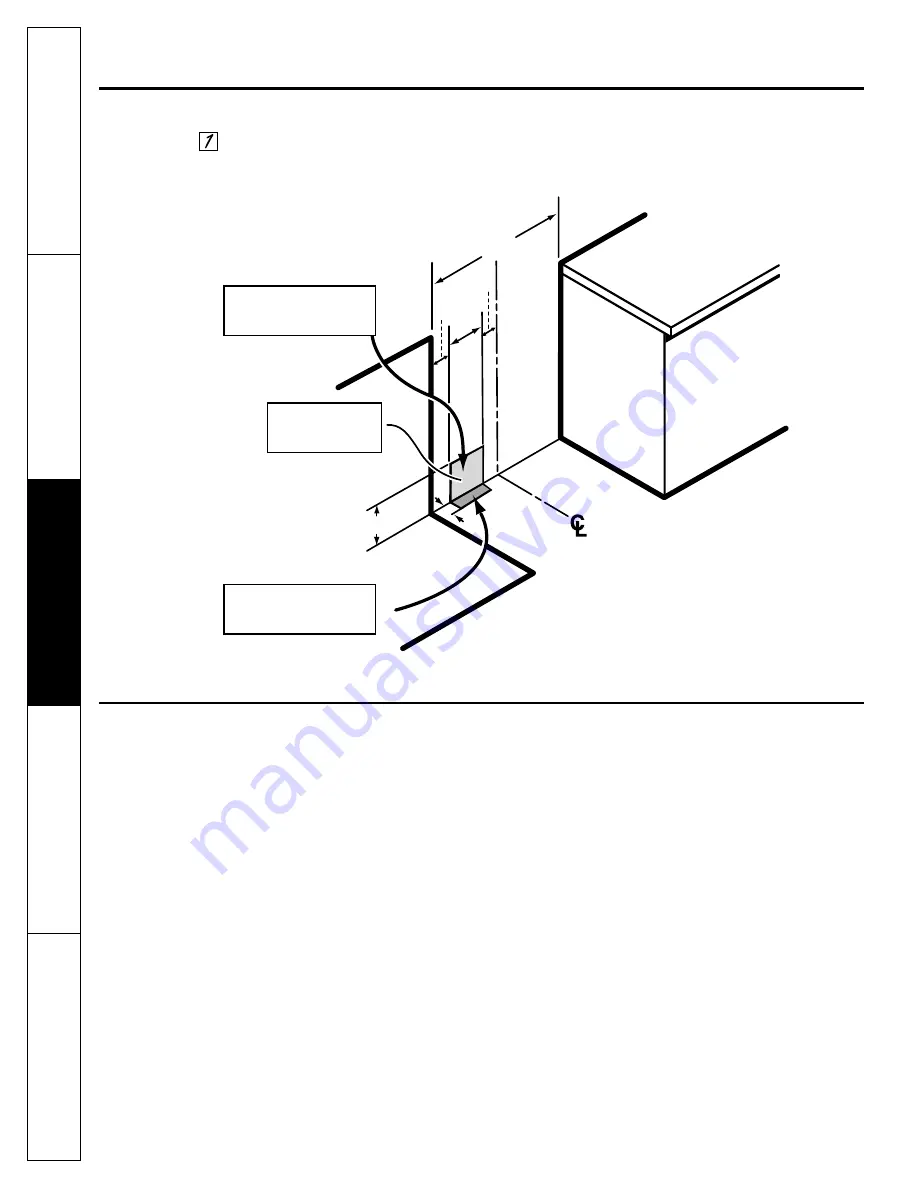
Operating Instructions
Safety Instructions
Installation Instructions
Tr
oubleshooting T
ips
Consumer Support
42
Read these instructions completely and carefully.
Installation of the range.
Gas Supply Requirements
Recommended Gas Pipe Outlet Locations
Provide Adequate Gas Supply
Make sure you are supplying your range with
the type of gas for which it is designed.
This range is convertible for use on natural or
propane gas. If you decide to use this range on
LP gas, conversion must be made by a qualified
LP installer before attempting to operate the
range on that gas.
For proper operation, the pressure of natural
gas supplied to the regulator must be between
4
″
and 13
″
of water column.
For LP gas, the pressure supplied must be
between 10
″
and 13
″
of water column.
When checking for proper operation of the
regulator, the inlet pressure must be at least 1
″
greater than the operating (manifold) pressure
as given above.
The pressure regulator located at the inlet of
the range manifold must remain in the supply
line regardless of whether natural or LP gas is
being used.
A flexible metal appliance connector used to
connect the range to the gas supply line should
have an I.D. of 1/2
″
and be 5 feet in length for
ease of installation.
Your range is designed to operate at a pressure of 4
″
of water column on natural gas or,
if designed for LP gas (propane or butane), 10
″
of water column.
7
1
⁄
2
”
9”
3”
30
”
3”
Recommended area for
through-the-wall
connection
of pipe stub/shut-off valve.
Recommended area for
through-the-floor
connection
of pipe stub/shut-off valve.
2”
This area allows
flush installation to
rear wall.
NOTE:
Make gas connections on
the left side of the cutout opening.

